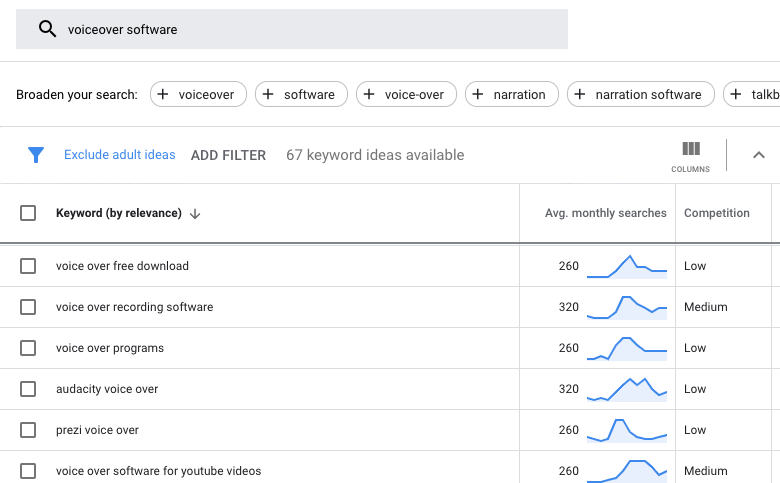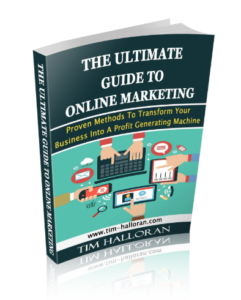You’ve just started affiliate marketing and wondering where to promote affiliate links? Those long, ugly links don’t look that attractive either do they!? So why would anyone want to click on them, right? A good place to start here is to ask this question: why would someone want to click on my link?
There’s millions of places you can put your link, but you want to put it somewhere where someone will actually click, and buy something, don’t you? Otherwise, you could spend months or even years pasting your link around the internet for nothing!
The key to knowing where to promote affiliate links is answering this question: why would someone click my link, and is their intention to purchase?
Where To Promote Affiliate Links – Link Shortening & Cloaking
If you’ve just joined an affiliate program, chances are good that you have a long ugly link that looks something like this: https://3fb99fgcr-jtfr9qs8fjsbr33z.hop.clickbank.net/
However you dress it up, it’s not tempting to click on a link like this. So one thing you can do is shorten your links with a link shortening tool. Here’s some link shortener websites:

- TinyURL
- ShortURL
- Cutt.ly
- Bitly
- Ow.ly
- Buff.ly
Many internet users are reluctant to clink on long links. According to a study conducted by Marketing Sherpa, short links attract over twice as many clicks as long links. It’s also harder to remember long, messy links, so people are less inclined to share them.
Link cloaking can help you track your sales too, and prevent other affiliates from hijacking your affiliate commissions.
Where To Promote Affiliate Links – Buyer Intent
Now that you’ve got your affiliate links nice and pretty, you’ll want to know where to promote affiliate links! Affiliate links can be promoted in a number of ways: through social media, via paid advertising, from an email list, on a blog, on YouTube videos.
You can even go through your social media profiles and paste your link into each profile. But what you really want is to put your link somewhere where people will click and purchase your products. You don’t want inquisitive “tyre kickers” either, you want hungry buyers!

An affiliate link on a social media profile doesn’t attract a log of buyer traffic. Firstly not many people will see it, and even if they do, why would someone click on your link anyway? Especially if it tells them nothing about what that link leads them to.
Having an affiliate link in your Facebook bio doesn’t guarantee this result. You need to drive targeted buyer traffic towards your affiliate link. There’s several ways to do this and you’ll need to choose a strategy which is right for you, your products and your style of working.
Where To Promote Affiliate Links – Hungry Buyers
Where do hungry buyers hang out? If you want to buy someone, where do you go? To the shop right? But before you go to the checkout and physically make that purchase, you might want to learn a little more about your product first. You’ll want to check your product is the right one, and that you’re not missing out on anything which might be better, or cheaper. Where can you find this kind of information? A product review website!

A review website is a good place to put your affiliate links. But in order to do this you’ll need to create the website. One of my first online sales came from a review article I wrote on a free blogging site called hubpages.com. You can also blog for free on WordPress or Blogger.com.
Free blog sites are a good place to start out and learn about blogging, but they can limit what you can do. Building your own blog website is a better idea if you want to take your affiliate marketing business seriously. Free sites are free, but they do limit you in terms of the links you’re allowed to post and from the traffic you can attract. Search engines don’t tend to rank content on free blog platforms as well as they do for owned websites.
Building Your Own Blog Site
Building your own blog website is a cheap method of attracting buyers for your affiliate products. By creating lots of content, which attract the right kind of buyer traffic, you can lead people to your products through your content. Blogging does take some time though, see how long does it take to make money blogging. But it’s a solid strategy to build a steady stream of traffic to your affiliate links.
If you just paste your links on social media accounts, there’s really no incentive for people to click on them because there’s no context for “passers by” to purchase something. But if you create a resource which is specifically for your target audience, you can collect a “showroom” for interested buyers. See why target market is important.

Once built, you can keep adding content to your website which is relevant for people who are interested in your product or service. Once you have this content, you can share it on social media platforms and link to it in your social media bios and other online profiles. This is much more relevant for “passers by”on your profiles because it offers them some information, rather than a ambiguous and messy link.
Where To Place Your Affiliate Link – Domain Forwarding
If you’re a super lazy affiliate and don’t want to build a blog, another strategy is to use domain forwarding. Find a product you want to promote and grab your affiliate link. I’ll use this product from Clickbank as an example. This is a text to speech artificial intelligence voice over product for video marketers.

This is what my affiliate link looks like having just created it on Clickbank: https://0fa6b9kms0bzlw9cwas7n2ud75.hop.clickbank.net/.
It’s a bit messy and unattractive, and I could use on of the link shorteners to make it look more pretty! But that wouldn’t give it any context. To tidy the link and give it context you can purchase a domain name which is suitable and simply forward your domain to the affiliate link. Hey presto, you now have a domain name you can share on your profiles around the internet. It’s much more attractive than the messy link, and there’s an instant context for your link.
To find a suitable domain name, I’ll look on Google’s keyword planner first to see what people are already looking for when it comes to AI voiceovers.

A good domain name which is used for forwarding to an affiliate link should sum up the purpose of the product in a few of words. This one might be suitable and is only £6.66 per year.

Once you’ve purchased your chosen domain name simple access your domain management system and forward the new domain name to your affiliate link.

Once you have your new domain name, you can share it in your emails, paste in throughout your social media profiles and it gives context and looks pretty!
Using Your Email Signature For Links
Here’s a clever strategy I use to share links to my website (which contains many affiliate links). If you build a website, it’s much more likely that someone will visit it than if you only link to a single affiliate product. Here’s an article sharing how to get traffic to your website free, once you’ve built one.
But if you have cloaked you link, or forwarded a domain name to a link, here’s a simple hassle free way to share it. Go in to your email account and under the settings tab find the email signature which you can add to every outgoing email you send.
Then simply add your name, and your link to your signature. Make sure you make the link clickable too. In Gmail, it looks like this:

It’s well worth doing a domain name forwarding option if you’re going to do this. It adds more relevancy to your link and people will know what it’s about.
Use An Active Profile
You can as mentioned post your links on your account profiles wherever you spend time online. Inactive profiles won’t get the same number of people visiting them as your active ones.
When I first became an affiliate, I used eBay quite a bit as I used to buy and sell on the site. You can update your profiles on eBay, Facebook, Twitter, Linkedin and whichever social media platform you are connected to to link to your affiliate products. Just don’t expect too much if you’re not actively building an audience or a following on them.
Here’s my eBay profile with a link to one of my articles on another website:

Building An Email List + Driving Traffic
Don’t expect to make a fortune by just posting your affiliate links and then sitting back! Sadly, that doesn’t really work very well. In order to make money through affiliate marketing, you need to drive traffic. The best ways to drive traffic are using paid advertising and by building an email list of subscribers. Top affiliates work hard at driving traffic to a landing page where they build a list of email subscribers.

Once you start getting subscribers on your list, you can create email messages to help them and build a long term relationship with them. As you build trust, and your list grows, you should find you can promote products to them if your focus is to help them and offer them the right products for them.
Paying for advertising can get expensive though so if you’re just starting out as an affiliate, it’s a good idea to learn the cheaper strategies for building traffic to your website.
You can still build an email list through blogging, but it will take much longer than by using paid marketing. You can start building an email list once you purchase an email autoresponder and learn how to drive traffic.
Once you have built a blog/website, you can attract people to sign up to your list by creating ebooks or using a “hook” provided through your affiliate product owner. Here’s a bit using selling ebooks as lead magnets.
Paid Marketing And Affiliate Links
Using paid marketing with your affiliate links is very difficult due to advertising regulations. Google Adwords would seem to be the perfect solution for affiliates since it is for targeted advertising. However, since you can’t control the website where you’re sending traffic, and it’s a third party site, Google doesn’t approve! To get round this problem, you can create a Google compliant website and collect subscribers information on your site.

Then, market your affiliate products through an email list.
If you drop affiliate links on your site, this can be a reason for an advert disapproval. Google considers these links as bridging, and may ban your advert from running. There’s a long list of requirements from advertisers – read Google advertising policies here.
However, if you’re using organic marketing on your website, this isn’t an issue, although affiliate links can affect your SEO (search engine optimisation). Here’s another reason for organic marketing although it’s much slower than using paid marketing.
Access Training And Get Support
I started out as an affiliate several years ago and it’s can be tough, especially if you go it alone. It’s well worth paying for training and support if you’re serious about earning an income as an affiliate marketer.
Access a free webinar for some key tips from Stuart Ross, who has been an affiliate and 8 figure entrepreneur in the online space for many years:
